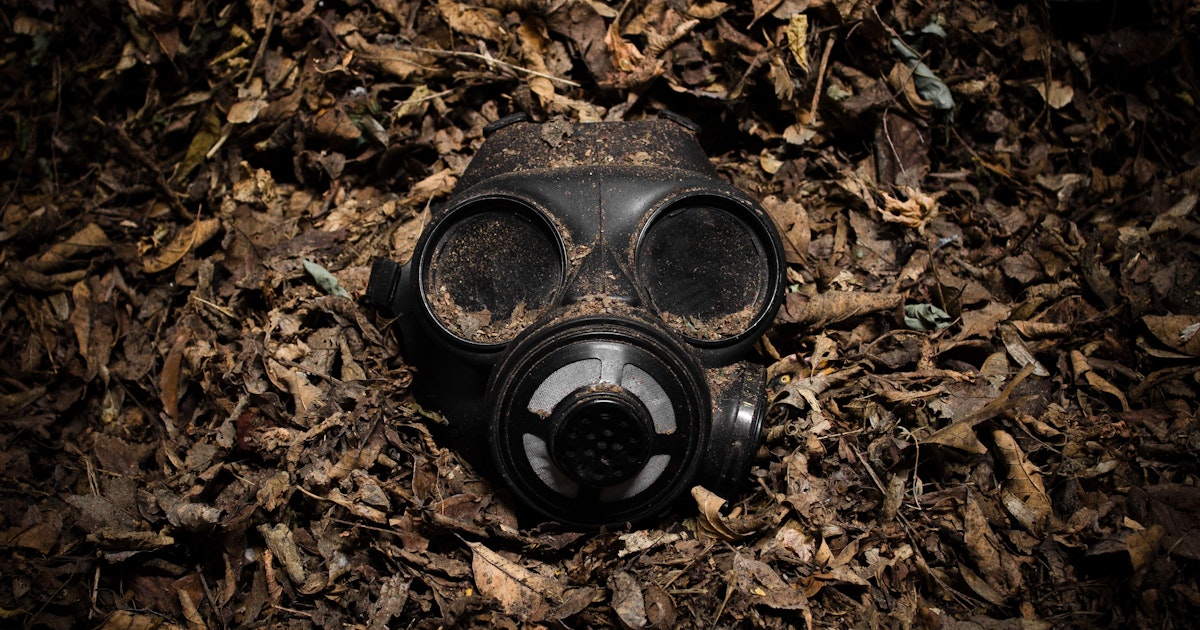Biological Weapons
Biological weapons, termed as bioweapons or biological threat agents, are living organisms or replicating entities such as bacteria, viruses, fungi, and toxins deliberately produced and released to cause disease or death in humans, plants, or animals. Bioweapon is cheaper than high-tech equipment and armor and can easily attack the target, usually unseen. This weapon can be used to gain strategic advantages over the enemy either through threats or their actual deployment. However, their harms outweigh their benefits, due to which their use has been strictly prohibited globally.
An overview of the history of Bioterrorism
Bioterrorism is when bioweapons are deliberately created by mutating the naturally existing bioagents or increasing their disease-causing capacity, or making them resistant to existing therapeutics with the intent of using them to destroy the enemy or their land. Several international pacts and treaties, including the customary international humanitarian law and the 1972 Biological Weapons Convention (BWC), have essentially prohibited offensive biological warfare and have declared the use of biological agents in armed conflict as a war crime.3-5 This prohibition came as a consequence of the “not so pleasant” history of using biological weapons in the past.
Evidence lists several wars in history deploying biological weapons. An example as early as the 1300s, in the Mongolian era, tells us about the death of many Mongol soldiers at the hands of the plague. Which is consequently believed by the researchers to have been the cause behind the Black Death plague in Europe, killing nearly 25 million Europeans.6-9 Another early example of the deployment of bioweapons comes from 1763, where the British soldiers attempted to spread smallpox against the Native Americans by giving them blankets borrowed from the hospitals having patients with smallpox.
Although this was an indirect move, the intent was clear of using smallpox as a bioweapon.10 A couple of bioweapons, including anthrax spores, brucellosis, and botulism toxins, were being prepared to be used in World War II; however, fortunately, the war ended before their utilization, or perhaps if utilized, the documentation was destroyed to remove any form of record.11 Bioweapons, although easy and cheaper to produce in comparison to armor, are not as simple as they appear. They can be unpredictable and out of control when used on a battlefield, and there’s a fair chance of both parties being affected. Once gotten out of hand, it can be extremely difficult or even impossible to end a bio-war, leading to strict prohibitions of deployment of any bioweapons anywhere in the world.

COVID-19; a pandemic or bio-war
The Lab-leak theory
Jumping onto recent times, the most crucial and acute issue globally is the current SARS-CoV2 (COVID-19) pandemic, sweeping through the world since November 2019. A great deal of conspiracies has surrounded this current COVID-19 pandemic, causing suspicion on the virus’s origin, portraying it to be an attempt of bioterrorism or a biowarfare experiment gone wrong rather than a mere disease outbreak. The most heated conspiracy theory regarding this pandemic calls this virus a “bioweapon” designed in a Chinese lab.
This speculation parallels the co-incidence of a highly sensitive gain-of-function lab in Wuhan (Wuhan Institute of Virology). China is located close to the wet market from where the SARS-CoV2 has been allegedly transferred into humans.13 Gain-of-function research (GoFR) is a form of medical research where an organism or a gene is modified under lab conditions to gain a new function or enhance its existing function. Gain-of-function research carries inherent threats to biosafety and security and is referred to as dual-use research of concern (DURC).14,15
Hence, the presence of this advanced virology lab in Wuhan that was already known to be studying coronaviruses in bats fed these accusations of China’s intentional release of a more virulent form of the existing coronavirus into the humans. The conspiracy believers suspect that the “bat coronavirus” has been genetically engineered to cause the disease in humans with an increased infectivity rate.13
To investigate this, a team of experts had arrived in Wuhan earlier this year and had stayed there for 12 days investigating and looking into every possible detail. The report published by WHO following this visit completely dismissed this conspiracy and called for further research to identify the true origin of the virus. On the other hand, US officials and policymakers remained unsatisfied with the findings of this report.
Many prominent scientists also criticized these findings and demanded a more serious investigation into the lab-leak issue. Believers of the “lab-leak” theory have a divided view; some think the virus was directly picked up from the lab, while others believe the virus had leaked from the lab and had reached the wet market where the early cases of it emerged.16 However, to date, the origin of the virus remains unclear, with a large number of scientists and investigators putting plenty of their efforts into getting all the answers.
Differentiating a pandemic from a bio-war
It is noteworthy that multiple similarities exist between a natural viral pandemic and the deliberate release of bioweapons worldwide. Both have a similar effect of causing panic, frustration, and despair among the public and the healthcare workers, overwhelming the healthcare systems. However, it is worth acknowledging that not all disease outbreaks are a deliberate attempt of bioterrorism with history providing sufficient examples of naturally occurring pandemics like the Middle Eastern Respiratory Syndrome (2015-ongoing), Severe acute respiratory syndrome (2002-2003), Hong Kong Flu (1968-1970) and the list goes on dating back to millions of years.17
Hence, epidemiological indicators need to be closely monitored to distinguish a pandemic from a deliberate bioweapon attack. It is important to monitor any unusual pattern in the geographic distribution of the disease or its behavioral differences in certain age groups of people, for example, the outbreak of influenza during the months of winter in most parts of the world is normal, but the spread of pulmonary anthrax in the Eastern Coast of US is alarming.
Hence, a significant number of healthcare experts and scientists advocate that there are no unusual epidemiological indicators about the current COVID-19 pandemic as the coronaviruses commonly occur in winters, just like they did in November 2019 in China. Moreover, it is believed to be very likely that SARS CoV-2 evolved from horseshoe bats that are abundantly consumed in China as part of their culture, causing the transfer of the virus from bats into humans, possibly marking the beginning of this pandemic rather than any offensive political move or an attempt of bio-war.18,19
Conclusion:
Bioterrorism or biowarfare is an extensive topic, and it was beyond the scope of this article to touch upon all of its aspects in detail. However, an utmost effort was made to succinctly summarize the key areas of this vast topic, giving a broad overview of the history of bioterrorism and, most importantly, touching upon its COVID-19 conspiracy theories. It is clear from the given arguments that bioweapons are cheaper and easier to develop than other forms of war equipment.
However, their relative characteristics of easily going out of control and the dread of being unable to put an end to a bio-war have resulted in the strict prohibition of the use of any bioweapons globally. It is important to note that there is a fine line between “defensive” and “offensive” biological research, and there are ongoing debates globally. Committees are being formed to strictly ensure that no offensive biological research is being carried out worldwide.
References:
- Biological weapons. Who.int. Available from: https://www.who.int/health-topics/biological-weapons#tab=tab_1
- “Bioterrorism Overview”. Centers for Disease Control and Prevention. 2008-02-12. Archived from the original on 2016-03-03. Retrieved 2009-05-22.
- Rule 73. The use of biological weapons is prohibited. Archived 12 April 2017 at the Wayback Machine, Customary IHL Database, International Committee of the Red Cross(ICRC)/Cambridge University Press.
- ^ Customary Internal Humanitarian Law, Vol. II: Practice, Part 1 (eds. Jean-Marie Henckaerts & Louise Doswald-Beck: Cambridge University Press, 2005), pp. 1607–10.
- ^ Jump up to: a b c d “Biological Weapons Convention”. United Nations Office for Disarmament Affairs. Archived from the original on 15 February 2021. Retrieved 2 March 2021.
- Wheelis M (September 2002). “Biological warfare at the 1346 siege of Caffa”. Emerging Infectious Diseases. 8 (9): 971–5. doi:10.3201/eid0809.010536. PMC 2732530. PMID 12194776.
- ^ Barras V, Greub G (June 2014). “History of biological warfare and bioterrorism”. Clinical Microbiology and Infection. 20 (6): 497–502. doi:10.1111/1469-0691.12706. PMID 24894605.
- ^ Andrew G. Robertson, and Laura J. Robertson. “From asps to allegations: biological warfare in history,” Military medicine (1995) 160#8 pp: 369-373.
- ^ Rakibul Hasan, “Biological Weapons: covert threats to Global Health Security.” Asian Journal of Multidisciplinary Studies (2014) 2#9 p 38. online Archived 17 December 2014 at the Wayback Machine
- Ranlet, P (2000). “The British, the Indians, and smallpox: what actually happened at Fort Pitt in 1763?”. Pennsylvania History. 67 (3): 427–441. PMID 17216901.
- Prasad SK (2009). Biological Agents, Volume 2. Discovery Publishing House. p. 36. ISBN 9788183563819.
- Filippa Lentzos, How do we control dangerous biological research?, Bulletin of the Atomic Scientists, 12 April 2018
- Kaszeta D. Perspective | no, the coronavirus is not a biological weapon [Internet]. The Washington Post. WP Company; 2020. Available from: https://www.washingtonpost.com/outlook/2020/04/26/no-coronavirus-is-not-biological-weapon/
- Gain-of-Function Research: Background and Alternatives. National Academies Press (US). 2015-04-13. Retrieved 25 May 2021.
- The Current Policy Environment. National Academies Press (US). 2017-09-14. Retrieved 26 May 2021.
- Covid: Who Says ‘EXTREMELY unlikely’ virus leaked from lab in China [Internet]. BBC News. BBC; 2021. Available from: https://www.bbc.com/news/world-asia-china-55996728
- Piret J, Boivin G. Pandemics throughout history. Frontiers in Microbiology. 2021;11.
- Andersen KG Rambaut A Lipkin WI, et al. . The proximal origin of SARS-CoV-2. Nat Med2020;26:450–452. [PMC free article] [PubMed] [Google Scholar]
- Zhang L, Yin F. Wildlife consumption and conservation awareness in China: a long way to go. Biodivers Conserv 2014;23:2371–2381. [Google Scholar]

A BSc Human Genetics and MSc Clinical Trials graduate from University College London. An ambitious clinical scientist who is interested in the field of cancer research and keen to promote cancer awareness and improve its therapeutics through her work in the field.



